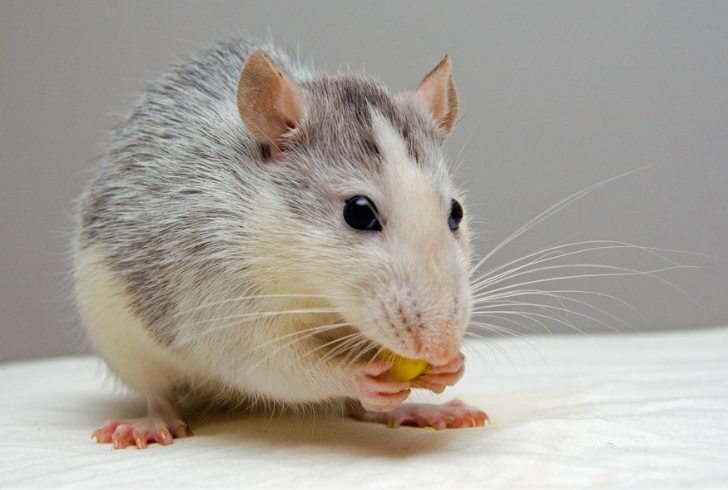Discovering a mouse in your kitchen can be unsettling, especially considering the health risks associated with these unwanted guests. Mice can invade kitchen drawers and cabinets, posing risks to food safety and household hygiene. This guide provides practical tips on how to keep mice out of kitchen drawers, ensuring a clean and safe environment for you and your family.
Understanding How Mice Enter Kitchen Cabinets
Mice are surprisingly adept at finding their way into kitchen cabinets and drawers. Their small size allows them to squeeze through gaps as narrow as ¼ inch, making it easy for them to access even minor openings.
Common entry points include cracks in the cabinetry, gaps around plumbing, and holes in the walls. Once they find a way inside, they can quickly settle in, especially if food and water sources are readily available.
Identifying Signs of a Mouse Infestation
Before taking action, it's crucial to recognize the signs of a mouse infestation. These signs include:
- Droppings: Look for small, black or brown droppings about 0.125 to 0.25 inches long, often found around food storage areas.
- Chewing Damage: Examine wood, shelf paper, and food packaging for signs of gnawing.
- Nesting Materials: Scattered materials like paper scraps and fabric may indicate nesting.
- Sounds: Listen for skittering or scratching noises, particularly during the night.
- Odors: A pungent smell, reminiscent of ammonia, often results from mouse urine.

Pixabay | Mice can easily squeeze through small gaps to enter kitchen cabinets and drawers due to their small size.
Top 10 Tips on How to Keep Mice Out of Kitchen Drawers
To address a mouse problem in kitchen drawers, follow these tips to eliminate current infestations and prevent future ones:
1. Thorough Cleaning
Begin by emptying your kitchen drawers and cabinets. Clean all surfaces with a disinfecting cleaner to remove any traces of mice. Ensure that all dishes, utensils, and kitchenware are washed thoroughly.
2. Immediate Spill Clean-Up
Promptly clean up any spills or crumbs. Mice are attracted to food sources, so maintaining a clean environment is essential to discouraging them from settling in.
3. Avoid Shelf Paper
Remove existing shelf paper and consider avoiding it in the future. Shelf paper can be a hiding spot for mice and may make it harder to detect their presence.
4. Regular Surface Cleaning
Wipe down countertops, stoves, and kitchen tables daily. This routine helps eliminate food residues that may attract mice.
5. Floor Maintenance
Sweep or vacuum the kitchen floor frequently to prevent crumbs and other debris from accumulating.
6. Fix Leaks
Inspect for leaks under sinks and repair any issues. Mice need water to survive, so eliminating their water sources can help deter them.
7. Secure Waste
Use a trash can with a tight-sealing lid and empty it regularly. This practice prevents mice from accessing food waste.
8. Store Food Properly
Keep food stored in airtight plastic, glass, or metal containers rather than in cardboard or paper packaging, which can be easily chewed through.
9. Dishwashing Routine
Wash dishes daily and avoid leaving them piled up in the sink. This prevents creating a potential food source for mice.
10. Professional Help
If the infestation persists, consult a pest control professional. They can inspect your kitchen and provide a tailored solution to address the mouse problem effectively.
Preventing Future Mouse Infestations

Freepik | Make it a habit to regularly clean and inspect all areas where food is stored or consumed.
To ensure mice do not return, it’s important to focus on prevention. Here’s how to keep mice out of kitchen drawers and other areas:
1. Seal Entry Points
Inspect your kitchen and surrounding areas for any gaps or holes. Common areas to check include:
- Floor Corners
- Closets
- Fireplace Surroundings
- Window and Door Seals
- Behind Appliances
- Plumbing Areas
- Air and Dryer Vents
- Attics and Basements
- Floor Drains
- Roof Eaves and Foundations
Seal any detected gaps or holes using steel wool combined with caulk as a temporary measure. Consider hiring a professional to make permanent repairs if necessary.
2. Maintain Cleanliness
While mice can invade even clean homes, maintaining a spotless kitchen reduces the likelihood of attracting them. Regularly clean and check areas where food is stored or consumed.
3. Regular Inspections
Conduct regular inspections of your kitchen and home for any new signs of mice. Early detection can help prevent a full-blown infestation.
Knowing how to keep mice out of kitchen drawers involves a combination of cleanliness, vigilance, and proactive measures. By following the guidelines above, it’s possible to maintain a rodent-free kitchen and ensure that your food storage areas remain safe and sanitary.








